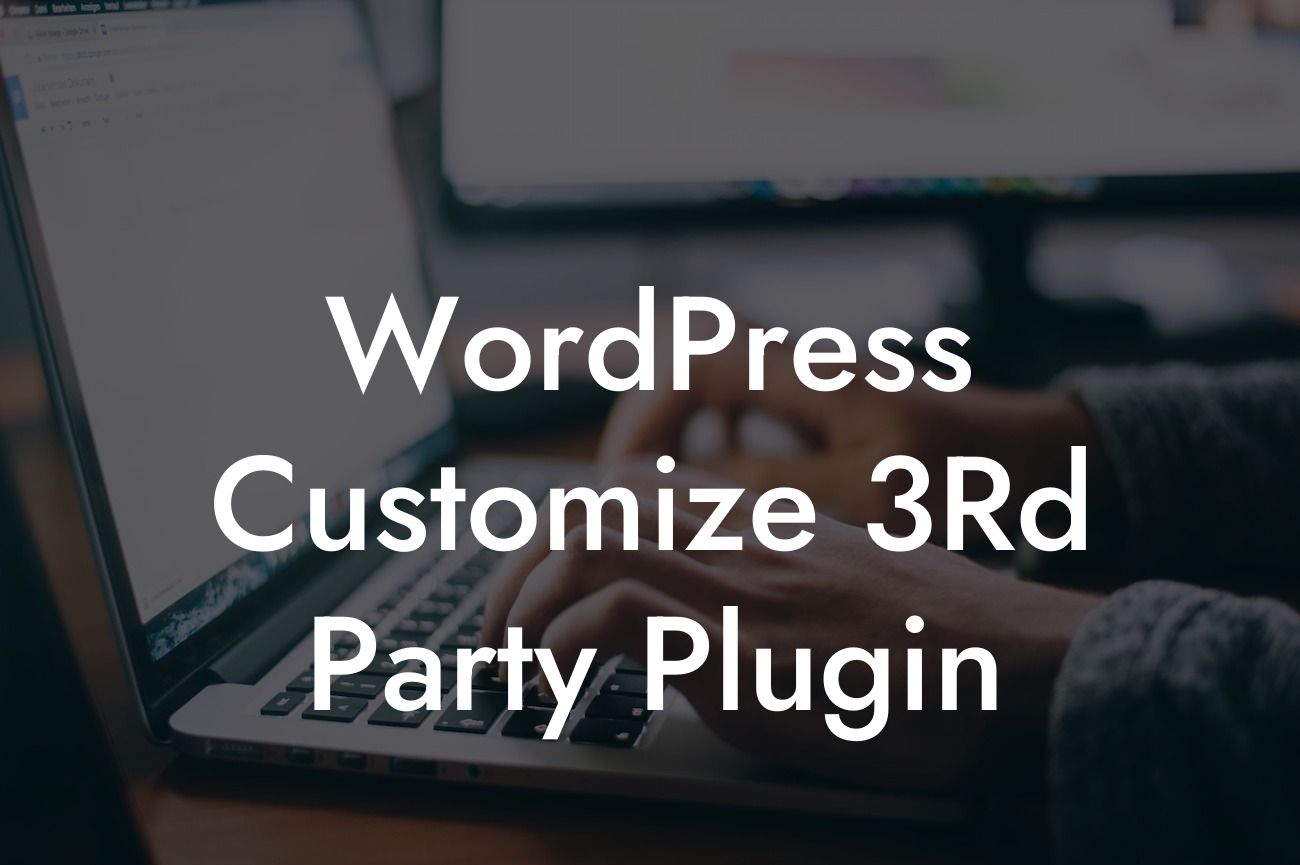Customizing a third-party plugin on your WordPress website can be a game-changer for your online presence. It allows you to add unique functionality, tailor the plugin to your specific needs, and enhance the overall user experience. In this comprehensive guide, we will walk you through the process of customizing third-party plugins, ensuring that you can take full control of your website's performance. Say goodbye to generic solutions and unlock the true potential of your WordPress plugins.
H2 Heading: Why Customize Third-Party Plugins?
Customizing third-party plugins offers several benefits for small businesses and entrepreneurs. Firstly, it allows you to align the plugin's functionality with your specific business requirements, ensuring a seamless integration into your website. Secondly, customization enables you to add unique features and design elements that resonate with your target audience, enhancing the overall user experience. Lastly, it ensures that your website stands out by differentiating yourself from competitors who might be using the same plugin.
H2 Heading: Understanding the Plugin Structure
Before diving into customization, it's essential to understand the structure of the plugin you're working with. Familiarize yourself with the plugin's files, functions, and hooks that govern its behavior. This knowledge will be crucial when making customizations without breaking the plugin's core functionality and compatibility with future updates. Take the time to study the plugin's documentation and explore its codebase to gain a comprehensive understanding.
Looking For a Custom QuickBook Integration?
H3 Heading: Customization Techniques
1. Child Theme: Creating a child theme is a recommended approach as it preserves the original plugin files while allowing you to override specific elements without affecting future updates. We'll guide you through the steps involved in creating a child theme and demonstrate how to modify templates, stylesheets, and functions effectively.
2. Hooks and Filters: Many plugins provide hooks and filters that allow developers to modify their behavior without modifying the plugin's core files. We'll explain what hooks and filters are, how they work, and provide practical examples of using them to customize the plugin's functionality to suit your needs.
3. Custom CSS and JavaScript: Sometimes, simple customizations can be achieved by adding custom CSS or JavaScript code to your WordPress theme or individual pages. We'll show you how to target specific plugin elements, adjust styling, and add interactive features using custom code snippets.
Wordpress Customize 3Rd Party Plugin Example:
Let's take the example of a popular social media sharing plugin that you've implemented on your WordPress website. By customizing this plugin, you can tailor the appearance, position, and behavior of the social sharing buttons to match your brand aesthetics and user preferences. Additionally, you can use hooks and filters to extend the plugin's functionality, such as adding custom sharing options or integrating with third-party analytics tools.
Congratulations! You now have the knowledge and tools to customize third-party plugins on your WordPress website. Remember to stay updated with the plugin's developer resources and documentation to ensure compatibility with future updates. Explore other guides on DamnWoo to discover more ways to enhance your online presence and try out our awesome WordPress plugins designed specifically for small businesses and entrepreneurs. Don't forget to share this article with fellow WordPress enthusiasts and let them benefit from our expert tips. Together, let's embrace the extraordinary.













